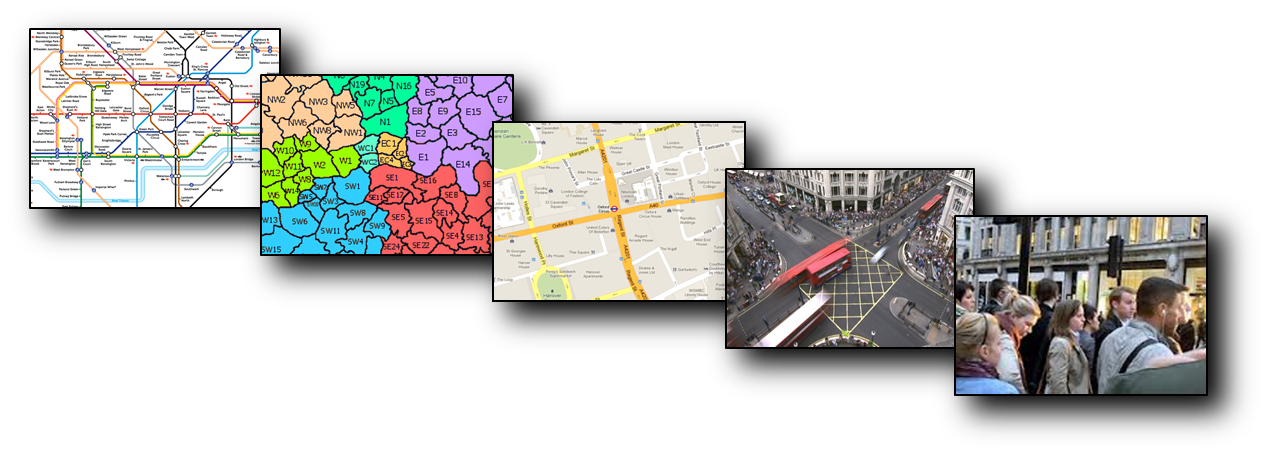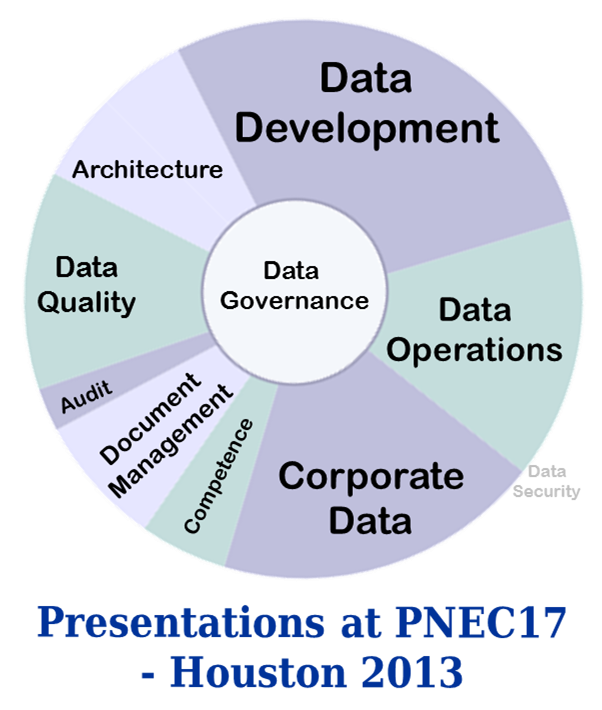
| Home | FAQs | Book Contents | Updates & News | Downloads |

Finding things in an unfamiliar city often requires navigating at a number of different levels. In London, for example, you can: observe the people and buildings in the immediate vicinity; recognise how buildings relate to each other in a satellite photograph; understand the way streets connect in the A-Z; appreciate the district names in a postcode map; or figure out how to travel to remote parts of the city with the underground map. Each one of these renditions has its own limitations. The fact that a street map doesn't (normally) show us the appearance of a building, or that the underground map shrinks distances between stations in the suburbs, is completely natural. Everyone knows that a satellite photograph won't show you where to change underground lines and an underground map won't tell you which street has been blocked by a broken down double decker bus.

If the discipline of "Petroleum Data Management" is to become a profession then, in my view, it absolutely needs a high level "map" that can be used to facilitate our discussions, to introduce new participants to the subject and to help corroborate our proposed solutions. Of course there are many possible ways to organise this overview and none of them will be perfect, but like the London Underground map it is better to have a shared view even if it's distorted. In my opinion a "good enough" version of such a framework already exists, mainly based round the concepts of DAMA, but with a few tweaks to match actual oil industry usage, that was the basis I used in the book.
But is this bias justified? What insights can such an approach deliver, for example looking at the recent Houston data management conference? Personally I came away from the conference with an impression that governance, architecture and future standards were the main themes. Given my preoccupations that was a fair, but entirely expected, picture. But, classifying the papers into the framework reveals that there was a lot more material about practical implementation (solution creation, service delivery and repository roles) than I had appreciated. That revelation (to me anyway) and the lack of any data security material provide some new ways to think about the event, which is always a good thing.
Article 7 |
Articles |
RSS Feed |
Updates |
Intro |
Book Contents |
All Figures |
Refs |
Downloads |
Links |
Purchase |
Contact Us |
Article 9 |